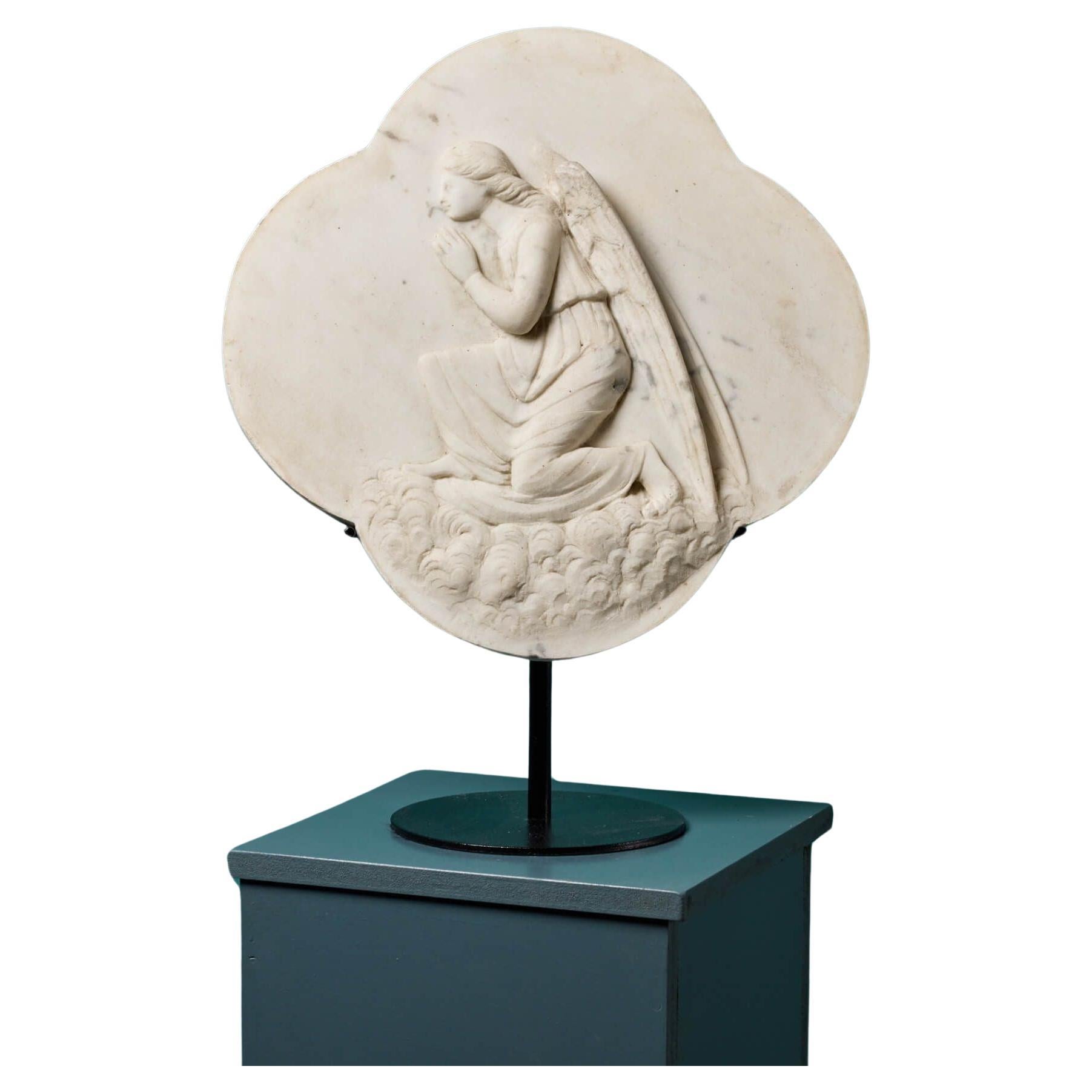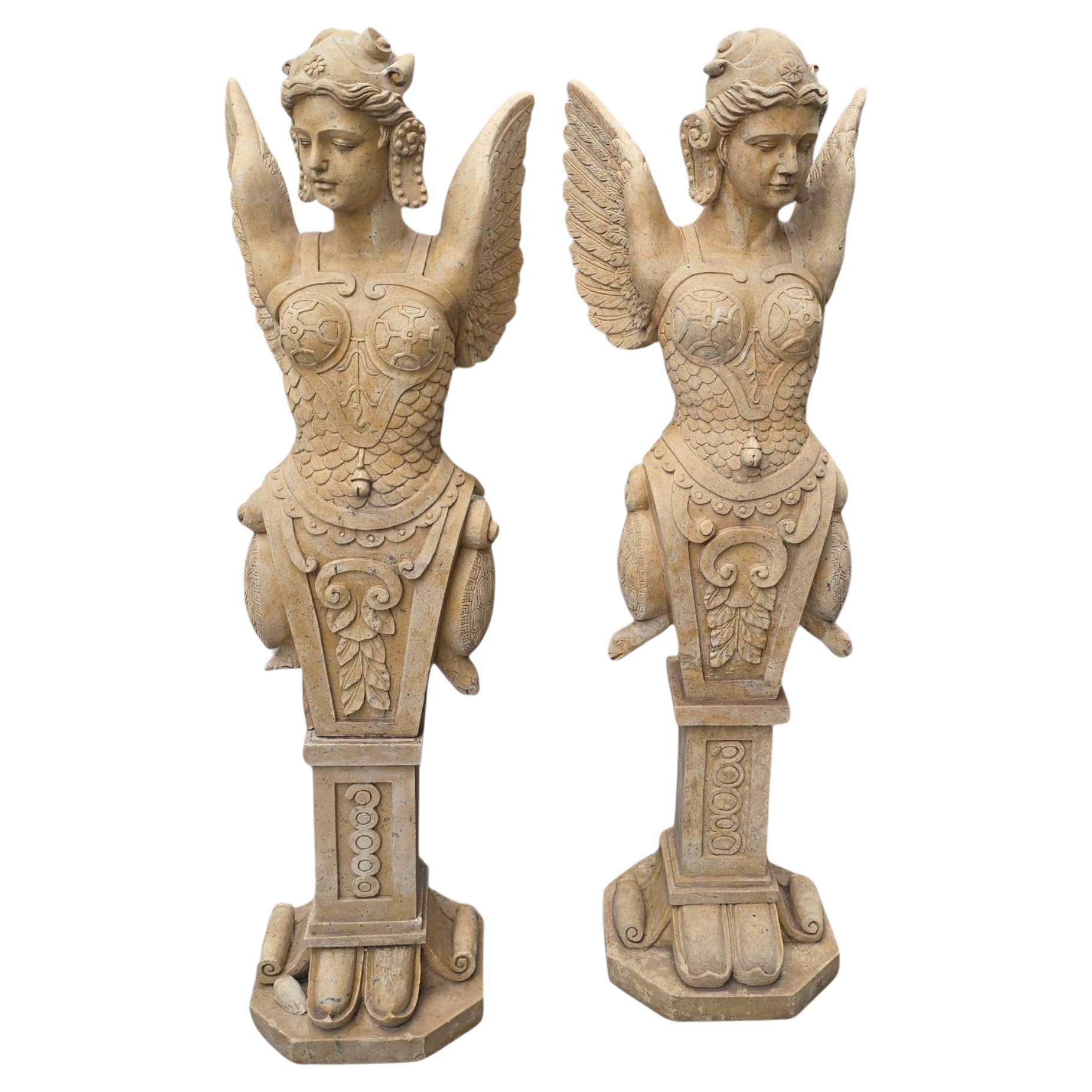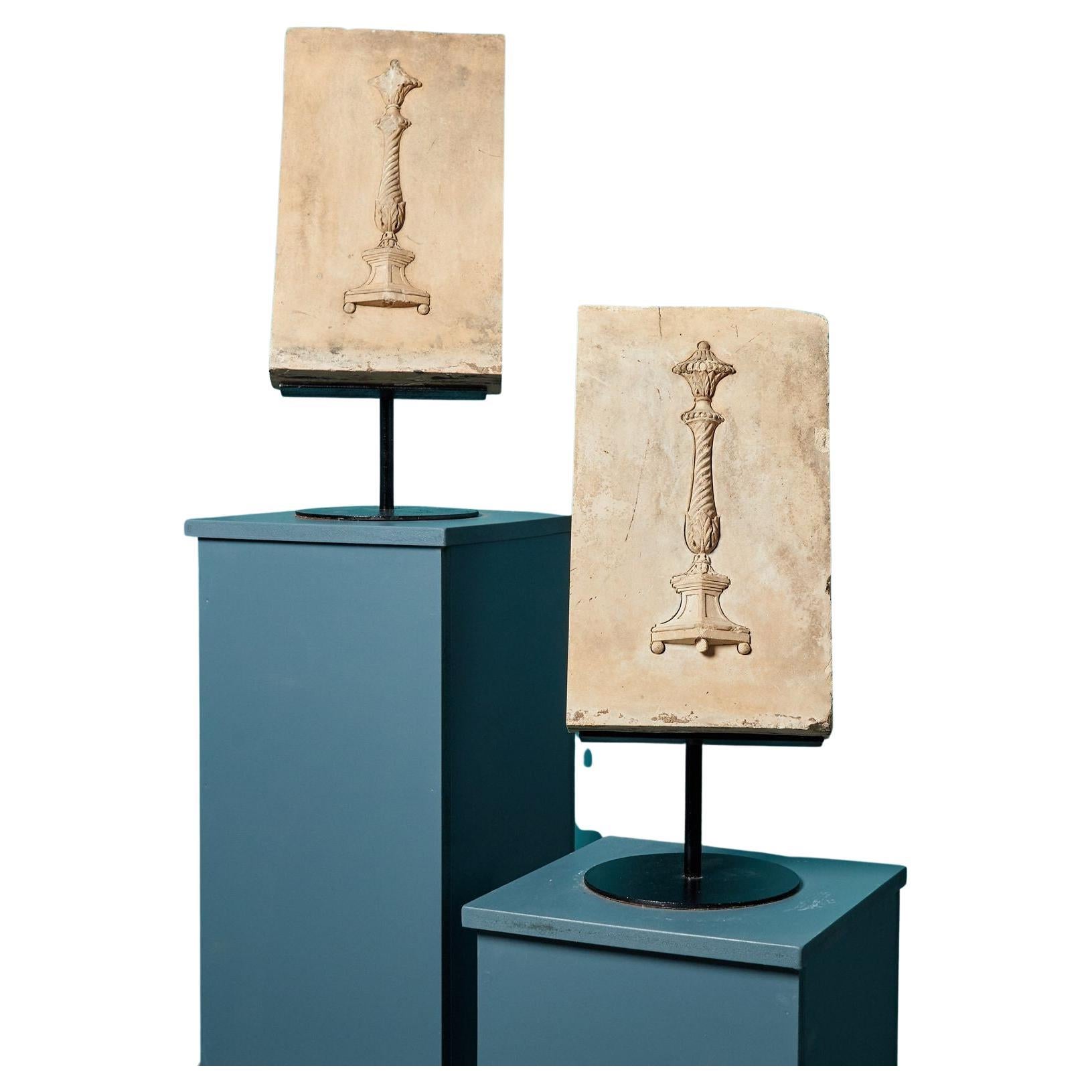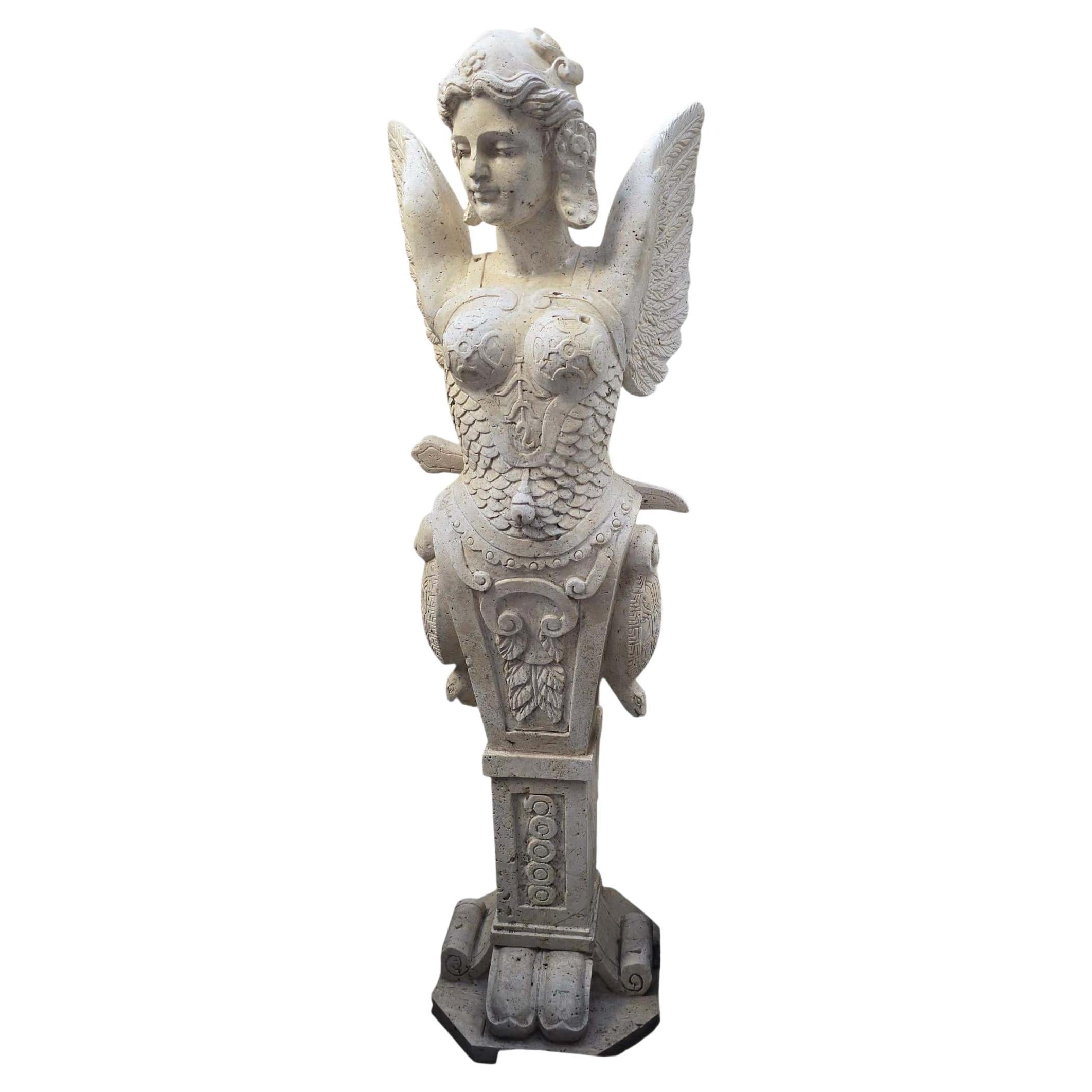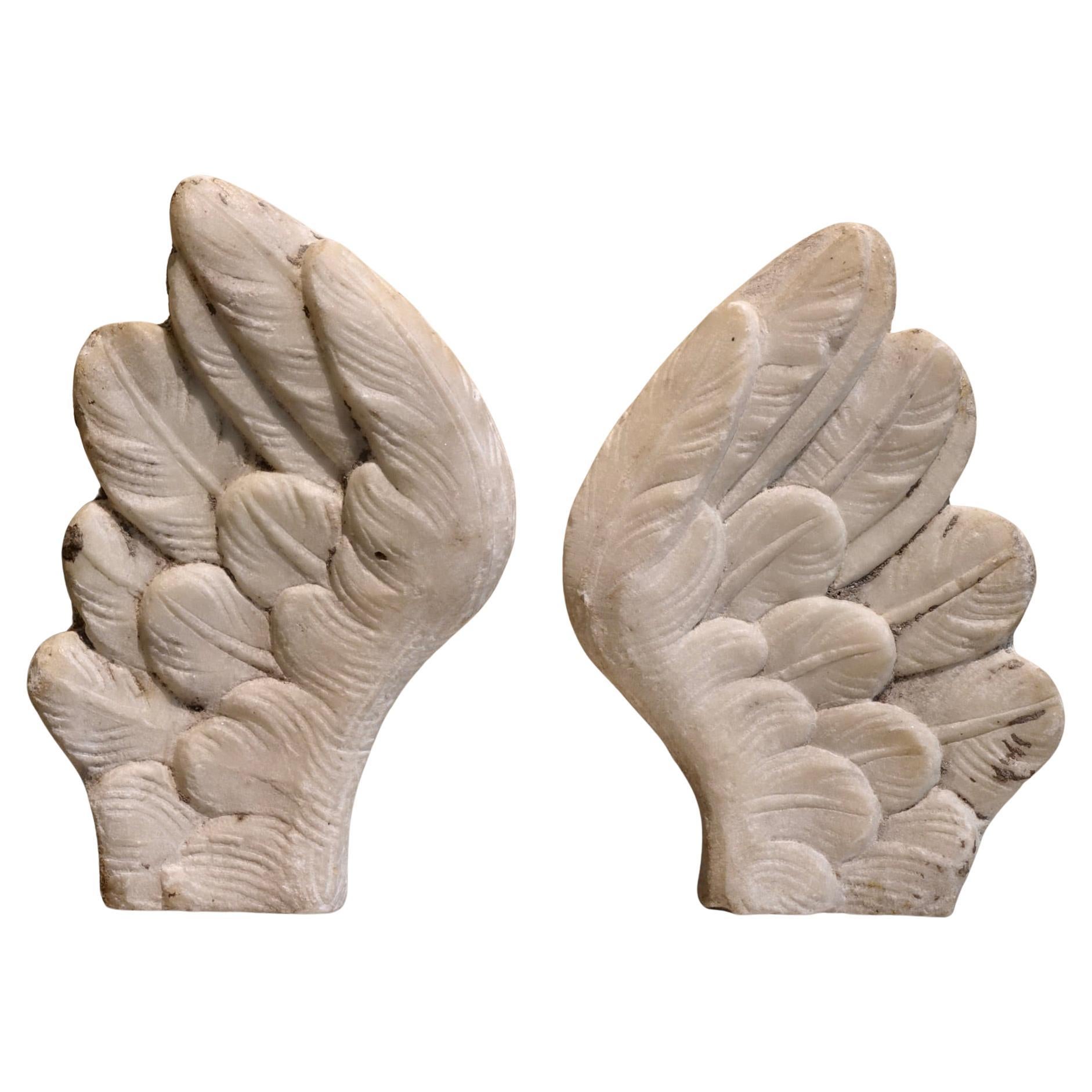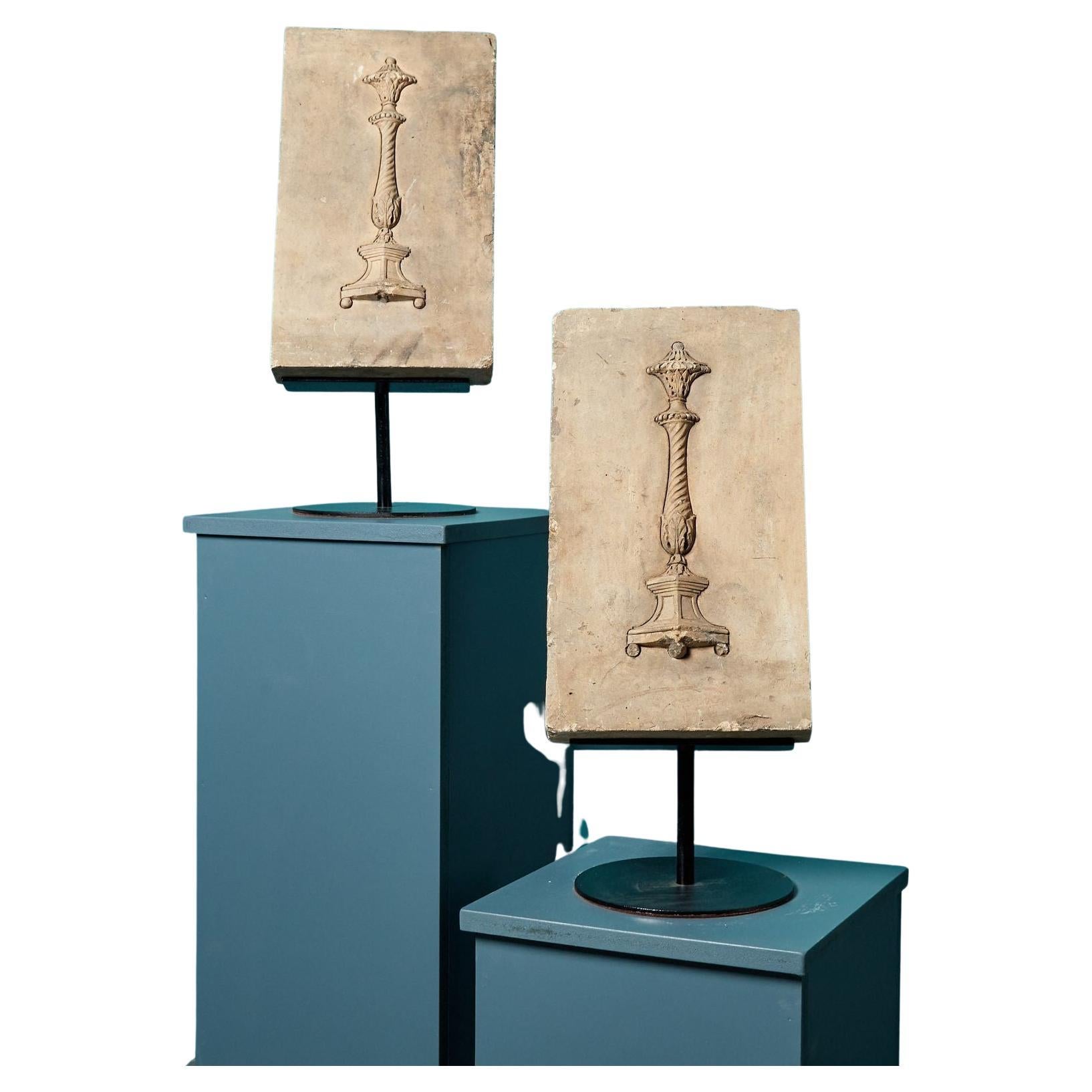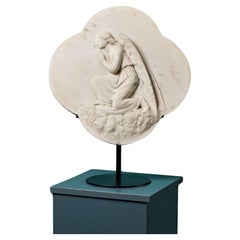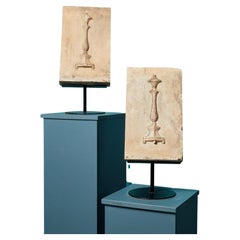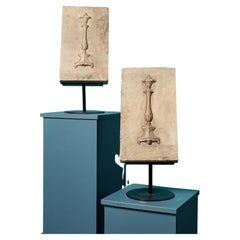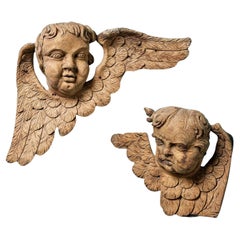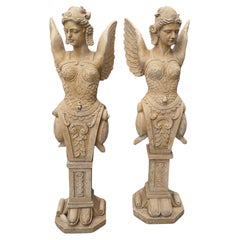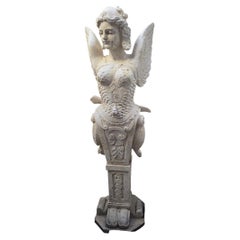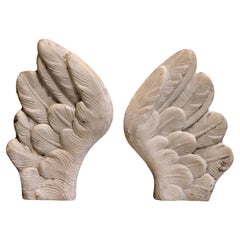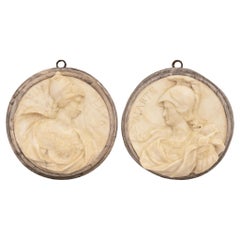Items Similar to Pair of Antique Marble Plaques Depicting Winged Angels
Want more images or videos?
Request additional images or videos from the seller
1 of 7
Pair of Antique Marble Plaques Depicting Winged Angels
$11,933.86
£8,775
€10,294.11
CA$16,708.89
A$18,417.76
CHF 9,516.58
MX$220,171.30
NOK 119,717.97
SEK 112,517.84
DKK 76,887.93
About the Item
A pair of mid 19th century statuary marble plaques depicting winged angels. In ecclesiastical and Victorian styles, this elegant pair show handcarved angels swinging thuribles, a religious medium used to connect the earthly and divine realms.
At over 150 years old, these decorative plaques have kept the original handcrafted details of their eye-catching angels. They are a fragment of ecclesiastical history that would take pride of place in any home.
Additional information
Stand is 40cm x 40cm square. One plaque has a depth of 9cm, the other 13cm.
Overall dimensions are plaque only.
Each plaque comes with a custom made heavy steel stand.
- Dimensions:Height: 21.07 in (53.5 cm)Width: 16.34 in (41.5 cm)Depth: 16.34 in (41.5 cm)
- Style:Victorian (Of the Period)
- Materials and Techniques:
- Place of Origin:
- Period:
- Date of Manufacture:1850
- Condition:Good structural condition. Lightly weathered surface finish. Large chips to top of each panel. If desired the top of the panel can be reduced and remove chip if required. Each one comes with custom made heavy steel stand.
- Seller Location:Wormelow, GB
- Reference Number:Seller: 9354621stDibs: LU2096338751262
About the Seller
4.9
Platinum Seller
Premium sellers with a 4.7+ rating and 24-hour response times
Established in 2006
1stDibs seller since 2016
734 sales on 1stDibs
Typical response time: 6 hours
- ShippingRetrieving quote...Shipping from: Wormelow, United Kingdom
- Return Policy
Authenticity Guarantee
In the unlikely event there’s an issue with an item’s authenticity, contact us within 1 year for a full refund. DetailsMoney-Back Guarantee
If your item is not as described, is damaged in transit, or does not arrive, contact us within 7 days for a full refund. Details24-Hour Cancellation
You have a 24-hour grace period in which to reconsider your purchase, with no questions asked.Vetted Professional Sellers
Our world-class sellers must adhere to strict standards for service and quality, maintaining the integrity of our listings.Price-Match Guarantee
If you find that a seller listed the same item for a lower price elsewhere, we’ll match it.Trusted Global Delivery
Our best-in-class carrier network provides specialized shipping options worldwide, including custom delivery.More From This Seller
View AllAntique White Marble Angel Plaque on Stand
Located in Wormelow, Herefordshire
This elegant quatrefoil shaped white marble plaque depicts a kneeling angel in high relief mounted on a bespoke steel stand. Intricately carved, the angel is left facing, kneeling on...
Category
Antique Late 19th Century Abstract Sculptures
Materials
Marble, Carrara Marble
Pair of Coade Stone Relief Panels
By Eleanor Coade
Located in Wormelow, Herefordshire
Pair of Coade stone Relief panels. These panels are elements of a ‘Garden Seat’ illustrated in Coade’s etchings. This corresponds to the 1784 publication ...
Category
Antique Late 18th Century Mounted Objects
Materials
Coade Stone
Two Coade Stone Relief Panels
By Eleanor Coade
Located in Wormelow, Herefordshire
Two coade stone Relief panels. These panels are elements of a ‘Garden Seat’ illustrated in Coade’s etchings. This corresponds to the 1784 publication A De...
Category
Antique Late 18th Century Mounted Objects
Materials
Coade Stone
Pair of Antique Neoclassical Carved Cherubs
Located in Wormelow, Herefordshire
A striking and competently carved pair of antique neoclassical carved cherubs.
Crafted in oak, these neoclassical sculptures depict detailed handcarved faces of cherubs or putto sup...
Category
Antique Mid-19th Century Italian Baroque Wall-mounted Sculptures
Materials
Wood, Oak
Antique Grand Tour Carved Statuary Marble Plaque
Located in Wormelow, Herefordshire
An antique Grand Tour style carved white statuary marble plaque.
Dating to circa 1830, this elegant tablet depicts an expertly handcarved Neoclassical scene.
A woman reclines on el...
Category
Antique Early 19th Century English Neoclassical Mounted Objects
Materials
Marble, Statuary Marble
19th Century Italian Statuary Marble Plaque After Duquesnoy
By François Duquesnoy
Located in Wormelow, Herefordshire
A large early 19th century Italian statuary marble plaque depicting a reclining cherub or putto, formerly owned by the 1st Earl of Mountbatten. Expertly carved in deep relief, this p...
Category
Antique Late 19th Century Italian Renaissance Mounted Objects
Materials
Marble, Statuary Marble
You May Also Like
Pair of Hand-Carved Italian Marble Allegorical Winged Figures
Located in Madrid, ES
Elegant pair of allegorical winged figures, hand-carved from fine Italian marble. These graceful sculptures, likely representing virtues or mythological spirits, feature flowing drap...
Category
Vintage 1980s Statues
Materials
Marble
Pair of Hand-Carved Italian Marble Allegorical Winged Figures
Located in Madrid, ES
Elegant pair of allegorical winged figures, hand-carved from fine Italian marble. These graceful sculptures, likely representing virtues or mythological spirits, feature flowing drap...
Category
Vintage 1980s Statues
Materials
Marble
$7,917 Sale Price
20% Off
Pair of Marble Wings
- Italy, 18th century
Located in Bruxelles, BE
Pair of Marble Wings
Italy, 18th century
16,5 x 11 x 3,5 cm
Carved in white marble, this finely executed pair of wings depicts plumage arranged in overlapping layers, suggesting mo...
Category
Antique Early 18th Century Italian Baroque Figurative Sculptures
Materials
Marble
Pair of Italian 19th century Marble plaques or Mars and Minerva
Located in West Palm Beach, FL
An attractive and most decorative true pair of Italian 19th century Gris St. Anne and white Carrara Marble plaques or Mars and Minerva. The two wonderfully carved circular white Carr...
Category
Antique 19th Century Italian Mounted Objects
Materials
Marble
Pair of 18th Century Carved Wooden Winged Cherubs from Italy
Located in Dallas, TX
Originally from 18th-century Italy, this pair of winged cherubs were hand-carved from wood as reflections of each other, meaning that their bodies are orientated as mirror images. Bo...
Category
Antique 18th Century Italian Figurative Sculptures
Materials
Wood, Paint
American Carved Authentic Large Marble Angel Statues
Located in Surrey, BC
Now and then something fantastic comes available to acquire. Here is a pair of marble (yes marble) angel statues salvaged from an old church in New...
Category
Early 20th Century American Classical Roman Statues
Materials
Marble
$110,000 / set
More Ways To Browse
Sculpture Plaques
Marble Plaque
Victorian Plaque
Angel Marble
Angel Victorian
Antique Marble Angel
Marble Angel Sculpture
Angel Plaques
Wood Hat Block
Wooden Cog
Antique Glass Film
Antique Swiss Cow Bells
Curtis Jere Sail Boat
Jere Sail Boats
Pulley Wheel
Quartz Fossil
Shell Necklace On Stand
Wooden Sculpture Of Couple
